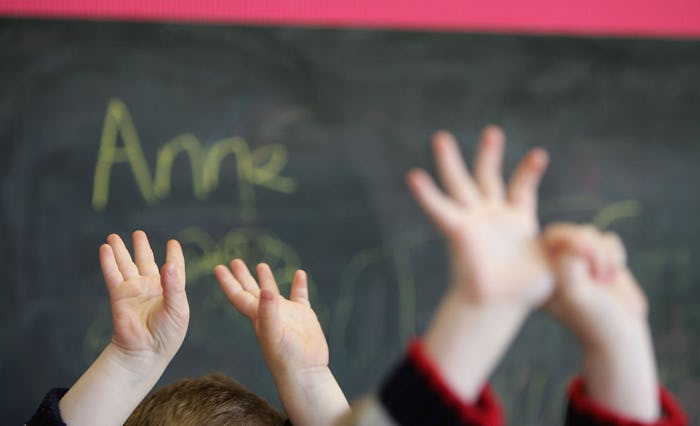Life

This One Simple Hack Will Help Kids In Math Class
I will admit that at the ripe old age of mind-your-own-business, I still frequently count on my fingers. Even when I have a perfectly acceptable calculator app on my phone, or a piece of paper and pen or whatever. There's something oddly reassuring about counting on my fingers. My kids still do it too, and they are actual smart people. It turns out, science says we were right all along. Because a new study has proven that the simple hack actually helps kids in math class. Vindication is sweet, my friends.
According to a recent study published in Frontiers In Education, counting on fingers and playing simple memory games in class are genuinely helpful tools in learning. Researchers Tim Jay of Sheffield Hellham University and Dr. Julie Betenson from the University of Bristol looked at 137 pupils between the ages of 6 and 7 years old. They worked with the students, playing various math-centric learning games. One group was given visual games like dominoes, while another group was given games that involved counting on their fingers, like numbering their fingers from 1 through 5. The final group was deemed "business as usual," and learned with their teacher in the classroom.
The results were surprising; while both the finger counting group and the group playing games scored higher than the "business as usual" group, counting on fingers was found to produce the strongest results.
Professor Tim Jay told Parents Magazine:
This study provides evidence that fingers provide children with a bridge between different representations of numbers, which can be verbal, written, or symbolic. Combined finger training and number games could be a useful tool for teachers to support children's understanding of numbers.
While the study found that exclusively counting on fingers didn't improve math cognition skills, the researchers noted that a combination of visual games, counting on fingers, and traditional classroom learning could provide optimum results. Professor Jay noted in The Independent:
This finding suggests that children’s developing number sense is best supported by experience of a combination of representations of number—in this case including fingers plus verbal, symbolic and non-symbolic representations—rather than by a particular set in isolation.
The large effect size suggests that with further refinement and replication, the combined finger training and number games intervention could be a useful tool for teachers to use to support children’s developing understanding of number.
Essentially, the researchers came to the same conclusion generations of children and parents have understood intuitively all along: There's a reason we all have fingers. And it's not just for picking things up and wearing cocktail rings. Fingers are obviously meant for counting. So keep it up, kids, you're on the right track.